- Home
- Dave Eggers
The Best American Nonrequired Reading 2013 Page 6
The Best American Nonrequired Reading 2013 Read online
Page 6
I took my sisters home and went to my house. It was something like two or three in the morning. I was crying as I drove up the hill because that’s when I said to myself, Now I can cry. I got home, went into my bedroom and built a fire in the fireplace. I sat in front of it and I said to my dad, “I’m not going to sleep until you tell me what happened.” I stayed up all night; I was struggling to understand what had happened.
My little brother Alberto arrived from Cartagena early the next morning, and I went with him and my sisters to the Forensic Medicine Institute at seven. I told the person in charge there, “I’ve come for my father,” and he said, “Look, there’s been a problem. The body bags broke, and all the bodies have been mixed up, so you’ll have to go in and ID him.” The little number I’d been given was useless.
My brother said, “I don’t think I can do this.” And I said, “You’re the man of this family now. Grab onto my arm as tight as you can and we’ll go together, but you can’t live with the doubt of whether it really was Dad or not.” So we went into a muddy, open-air courtyard filled with body bags. We had to walk among the dead, among the severed limbs, as an official from the Forensic Medicine Institute opened the bags and asked, “Is this him?” The decomposition process, after sitting out in the sun and then in the rain overnight, was incredible. When we finally found our dad, it was horrible, because his body was slimy; his skin had sort of melted.
We took his body and held a funeral a few days later. We couldn’t have an open casket because of the state he was in. Lots of people sent flowers, and there were nice eulogies. I fell into a sort of limbo; I was there but I wasn’t. I didn’t eat. In that week, I lost something like eleven kilos from the anxiety, from not sleeping. Then, two weeks after my father was killed, my sister Angélica started doing heavy drugs. She’s never gotten over it. She’s been in and out of rehabilitation clinics seven times.
After the funeral, my family hired a well-respected lawyer to sue the state for the bombing, because the airport security controls had failed. In the days following the bombing, investigators determined that someone had walked onto the plane, left the bomb in a briefcase under a seat, and walked off. The lawyer was also handling the cases of several of the other families from the plane. However, three days after we hired him, the lawyer was gunned down at the door to his building.
About a month after my dad was killed, I was riding in a taxi in Bogotá. I was chatting with the taxi driver because I like to do that. He was listening to the radio when the announcer said that the drug trafficker Rodríguez Gacha had just been killed.
I said, “Stop, please, please stop.” The driver said, “Why, what happened?” I said, “Do you have a minute?” He stopped, and I got out, looked up to heaven and gave thanks to God. “One down,” I said.
By that time I felt I couldn’t live in this country any more. I was incensed by everything that was happening with the drug traffickers trying to take over the country, the war they had declared. So on February 11, 1990, I left Colombia for New York on a temporary visitor’s visa. I lived in a tiny apartment on 58th Street between Fifth and Sixth Avenues, but I wasn’t exactly struggling. I started working at an art gallery, and I studied language and literature at Columbia University to improve my English. I then started studying film direction.
I met my husband Pedro on a trip back to Colombia in March 1990. I was there for an event in my dad’s memory. Pedro is Spanish and he worked at a bank there. He would fly up to New York on the weekends to see me, and a year later we got married and moved to Spain. We had two children, Juan Carlos and Pilar. Now we live in southern Florida.
For many years I was embarrassed to admit that I was a victim of my country. And I was afraid to remember, to face all that again. I never spoke about how my dad died. You try to forget because that’s your medicine. I only started facing it in 2011. I’ve lived outside of Colombia for more than twenty years and I go back for visits, but I wouldn’t live there. Drug trafficking has been a cancer on this country. It’s contaminated everything, it’s penetrated everywhere. And I never want my kids to think that’s normal.
II
ANA ARANA AND SEBASTIAN ROTELLA
Finding Oscar: Massacre, Memory, and Justice in Guatemala
FROM ProPublica
Chapter 1: “You Don’t Know Me”
THE CALL FROM GUATEMALA put Oscar on edge.
Prosecutors came looking for you, relatives in his rural hometown told him. Big shots from Guatemala City. They want to talk to you.
Oscar Alfredo Ramírez Castañeda had plenty to lose. Although he was living in the United States illegally, the 31-year-old had built a solid life. He worked two full-time jobs to support his three children and their mother, Nidia. They had settled in a small but cheerful townhouse in Framingham, Mass., a blue-collar suburb of Boston.
Oscar usually did his best to avoid contact with the authorities. But he decided to call the prosecutor in Guatemala City. She said it was a sensitive matter about his childhood and a massacre in the country’s civil war long ago. She promised to explain in an email.
Days later, Oscar sat at his computer in a living room full of toys, school trophies, family photos, a crucifix and souvenirs of his native land. He had arrived home from work late at night, as usual. Nidia, seven months pregnant, rested on a couch nearby. The children slept upstairs.
Oscar’s green eyes scanned the screen. The email had arrived. He took a breath and clicked.
“You don’t know me,” it began.
The prosecutor said she was investigating a savage episode of the war, a case that had deeply affected her. In 1982, a squad of army commandos had stormed the village of Dos Erres and slaughtered more than 250 men, women and children.
Two small boys who survived were taken away by the commandos. Twenty-nine years later, 15 years after she had started hunting the killers, the prosecutor had reached an inescapable conclusion: Oscar was one of the boys who had been abducted.
“I know that you were much loved and well treated by the family in which you grew up,” the prosecutor wrote. “I hope you have the maturity to absorb everything I am telling you.”
“The point is, Oscar Alfredo, that although you don’t know it, you were a victim of this sad event I mentioned, just like the other child I told you that we found, and the families of the people who died in that place.”
By now, Nidia was reading over his shoulder. The prosecutor said she could arrange a DNA test to confirm her theory. She offered an incentive: help with Oscar’s immigration status in the United States.
“This is a decision you must make,” she wrote.
Oscar’s mind raced through images of his childhood. He struggled to reconcile the prosecutor’s words with his memories. He had never known his mother. He did not remember his father, who had never married. Lt. Oscar Ovidio Ramírez Ramos had died in an accident when he was just four. Oscar’s grandmother and aunts had raised him to revere his father.
As the family told it, the lieutenant was a hero. He graduated at the top of his academy class, became an elite commando and won medals in combat. Oscar treasured the soldier’s red beret, his aging photo album. He liked to leaf through the pictures showing an officer with a bantam build and youthful smile, riding in a tank, carrying the flag.
The lieutenant’s nickname, a diminutive of Oscar, was Cocorico. Oscar called himself Cocorico the Second.
“You don’t know me.”
If the prosecutor’s suspicions were correct, Oscar didn’t know himself. He was not the son of an honorable soldier. He was a kidnapping victim, a battlefield trophy, living proof of mass murder.
Yet, as overwhelming as the revelation was, Oscar had to admit it was not completely new. A decade earlier, someone had sent him a Guatemalan newspaper article about Dos Erres. It mentioned his name and the supposed abduction. But his family back home convinced him the idea was preposterous, a leftist fabrication.
Far from the harsh realities of Guatemala, Oscar p
ut the story out of his mind. The country he had left was among the most desperate and violent in the Americas. About 200,000 people died in the civil war that had ended in 1996. The right-wing military, accused of genocide in the conflict, remained powerful.
Now, the case was pulling Oscar into Guatemala’s struggle with its own tragic history. If he took the DNA test and the results were positive, it would transform his life in dangerous ways. He would become flesh-and-blood evidence in the quest to find justice for the victims of Dos Erres. He would have to accept that his identity, his whole world, had been based on a lie. And he would be a potential target for powerful forces that wanted to keep Guatemala’s secrets buried.
Guatemalans wrestled with a similar dilemma. They were divided over how much effort to devote to punish the crimes of the past in a society overwhelmed by lawlessness. The uniformed killers and torturers of the 1980s had helped spawn the mafias, corruption and crime that assail Central America’s small and weak states. The Dos Erres investigation was part of the battle against impunity, a fight for the future. But small victories had big potential costs: retaliation, political strife.
Like his country, Oscar would have to choose whether to confront painful truths.
Chapter 2: “We’re Not Dogs For You to Kill”
The fall of 1982 was tense in Peten, Guatemala’s northern panhandle near Mexico.
Government troops in the region battled a guerrilla group known as the Fuerzas Armadas Rebeldes (Rebel Armed Forces), or FAR. The nationwide counterinsurgency campaign was methodical and brutal. Dictator Efraín Ríos Montt, a general who had taken power after a coup in March, unleashed search-and-destroy missions on rural villages suspected of sheltering guerrillas.
Although there had been fighting near Dos Erres, the remote jungle hamlet was comparatively calm. It had been founded only four years earlier in a government land redistribution program. Unlike areas where rebels recruited aggressively among the country’s indigenous peoples, the residents of Dos Erres were mainly ladinos—Guatemalans of mixed white and indigenous descent. The 60 families who lived in the lush terrain grew beans, corn and pineapples. There were dirt roads, a school and two churches, one Catholic and one evangelical. The village name, which meant “Two R’s,” was a tribute to the founders, Federico Aquino Ruano and Marcos Reyes.
The area army commander, Lt. Carlos Antonio Carias, wanted the men of Dos Erres to join an armed civil-defense patrol at his base in the town of Las Cruces, about seven miles away. The men resisted, saying they would only patrol their own community. Lt. Carias turned hostile, accusing the people of Dos Erres of harboring guerrillas. He barred residents from flag-raising ceremonies. As evidence of their supposed treachery, he showed his superiors a harvesting sack that bore the initials FAR, claiming it was the insignia of the rebel group. In reality, the sack belonged to the hamlet’s cofounder Ruano and was inscribed with his initials.
In October, the army suffered a humiliating defeat in which guerrillas killed a group of soldiers and made off with about 20 rifles. By early December, intelligence indicated the rifles were in the area of Dos Erres. The army decided to send its crack commandos, the Kaibiles, to recover the weapons and teach the villagers a lesson.
The commandos were the point of the spear in an anti-guerrilla offensive that had already drawn international condemnation. Kaibil means “having the strength and astuteness of two tigers” in the Mam indigenous language. With a notoriously harsh training regime in survival skills, counterinsurgency and psychological warfare, the Kaibil commandos were viewed as Latin America’s most brutal special forces. Their motto: “If I advance, follow me; if I stop, urge me on; if I retreat, kill me.”
The plan was to conceal the identity of the raiders. On Dec. 6, 1982, a 20-man Kaibil squad assembled at a base in Petén and disguised themselves as guerrillas, replacing their uniforms with green T-shirts, civilian pants and red armbands. The 40 uniformed troops who joined them had orders to provide perimeter support and pre vent anyone from entering or leaving. Whatever happened in Dos Erres would be blamed on the leftists.
The troops departed at 10 p.m. in two unmarked trucks. They drove until midnight, then hiked for two hours into the dense humid jungle. They were guided by a captive guerrilla who had been forced into the mission.
On the outskirts of the hamlet, the attack squad deployed in the usual configuration of groups: assault, perimeter, combat support and command.
The command group had a radio operator who would communicate with army brass throughout the operation. The assault group consisted of specialists in interrogation and close-quarters, hands-on killing. Even fellow commandos in the squad kept their distance from the marauders of the assault group, whom they viewed as psychopaths.
The Kaibiles chosen for the secret mission were considered the elite of the elite. At 28, Lt. Ramírez was the most experienced of them all.
Known as Cocorico and El Indio (The Indian), Ramírez had graduated at the top of his class in 1975. He had won a scholarship for advanced training in Colombia, but got in trouble for partying and misspending funds. Suspended by the army for six months, he fought in Nicaragua as a mercenary in 1978 for the forces of the dictator Anastasio Somoza Debayle, a U.S. ally. Leftist guerrillas toppled Somoza the next year, raising fears of a domino effect and reinforcing Guatemala’s role as a strategic bastion for Washington’s fight against communism in Central America.
Ramírez returned to Guatemala and joined an artillery unit. Wounded and decorated in November 1981, he engaged in covert operations against guerrillas, often in civilian dress, and developed a reputation for cruelty and thievery. A fellow soldier who served with him considered him “a criminal in uniform.”
Other veterans, however, admired his battlefield prowess and loyalty to his troops. Ramírez was a dutiful son, wiring money to his mother each month. The mother complained frequently that the unmarried lieutenant hadn’t given her a grandchild.
Ramírez became an instructor at the commando training school in Petén. In 1982, the Ríos Montt regime closed the school and created a roving squad of instructors who were skilled combatants: lieutenants, sergeants, corporals. Ramírez was deputy commander of the unit, which could be deployed rapidly as a strike force in rebel strongholds.
The squad stormed Dos Erres at 2 a.m.
Commandos kicked in doors and rounded up families. Although the soldiers had been ready for a firefight, there was no resistance. They did not find any of the stolen rifles.
The commandos herded the men into a school and the women and children into a church. The violence began before dawn. One of the soldiers, César Ibañez, heard the screams of girls begging for help. Several soldiers watched as Lt. César Adán Rosales Batres raped a girl in front of her family. Following their superior officer, other commandos started raping girls and women.
At midday, the commandos ordered the women they had abused to prepare food at a small ranch. The soldiers ate in shifts, five at a time. Young women cried as they served Ibañez and the others. Returning to his post, Ibañez saw a sergeant leading a girl down an alley.
The sergeant told him the “vaccinations” had started.
The commandos brought the villagers one by one to the center of the hamlet, near a dry well about 40 feet deep. Favio Pinzón Jerez, the squad’s cook, and other soldiers reassured the captives that everything would be all right. They were going to be vaccinated. It was a routine health precaution, nothing to worry about.
Commando Gilberto Jordán drew first blood. He carried a baby to the well and hurled it to its death. Jordán wept as he killed the infant. Yet he and another soldier, Manuel Pop Sun, kept throwing children down the well.
The commandos blindfolded the adults and made them kneel, one at a time. They interrogated them about the rifles, aliases, guerrilla leaders. When the villagers protested that they knew nothing, soldiers hit them on the head with a metal sledgehammer. Then they threw them into the well.
“Malditos!” the vi
llagers screamed at their executioners. “Accursed ones.”
“Hijos de la gran puta, van a morir!” the soldiers yelled back. “Sons of the great whore, you are going to die!”
Ibañez dumped a woman in the well. Pinzón, the cook, dragged victims there alongside a sub-lieutenant named Jorge Vinicio Sosa Orantes. When the well was half-filled, a man who was still alive atop the pile of bodies managed to get his blindfold off. He shouted curses up at the commandos.
“Kill me!” the man said.
“Your mother,” Sosa retorted.
“Your mother, you son of the great whore!”
Pinzón watched as the infuriated Sosa shot the man with his rifle and, for good measure, threw a grenade into the pile. By the end of the afternoon, the well overflowed with corpses.
The carnage continued elsewhere. Salome Armando Hernández, 11, lived in another hamlet near Dos Erres. Early that morning he had traveled on horseback with his 22-year-old brother to buy medicine in Las Cruces. When they arrived in Dos Erres at about 10 a.m. to visit an uncle, commandos put Hernández in the church with the women and children.
Peeping between wood slats, the boy saw commandos beat and shoot people. His brother and uncle were killed.
In the afternoon, the raiders gathered about 50 women and children from the church and marched them toward the hills. Hernández positioned himself in the front of the line. He knew they were being taken to their deaths. So did the others.
“We’re not dogs for you to kill us in the field,” a woman declared. “We know that you are going to kill us, why don’t you kill us right here?”

 A Hologram for the King
A Hologram for the King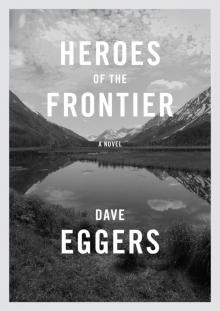 Heroes of the Frontier
Heroes of the Frontier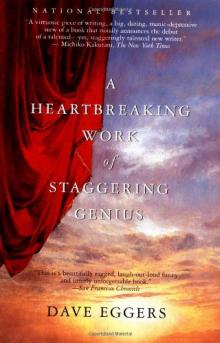 A Heartbreaking Work of Staggering Genius
A Heartbreaking Work of Staggering Genius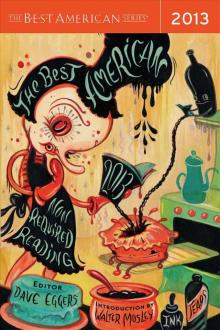 The Best American Nonrequired Reading 2013
The Best American Nonrequired Reading 2013 How We Are Hungry
How We Are Hungry The Circle
The Circle What is the What
What is the What The Museum of Rain
The Museum of Rain The Captain and the Glory
The Captain and the Glory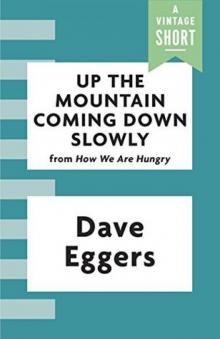 Up the Mountain Coming Down Slowly
Up the Mountain Coming Down Slowly The Parade
The Parade The Monk of Mokha
The Monk of Mokha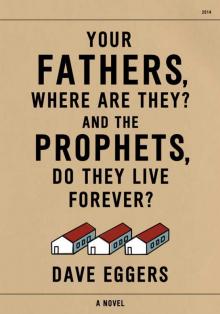 Your Fathers, Where Are They? And the Prophets, Do They Live Forever?
Your Fathers, Where Are They? And the Prophets, Do They Live Forever? You Shall Know Our Velocity
You Shall Know Our Velocity The Wild Things
The Wild Things 2006 - What is the What
2006 - What is the What The Best American Nonrequired Reading 2011
The Best American Nonrequired Reading 2011 Created in Darkness by Troubled Americans
Created in Darkness by Troubled Americans